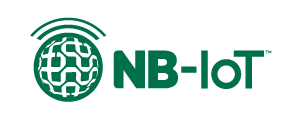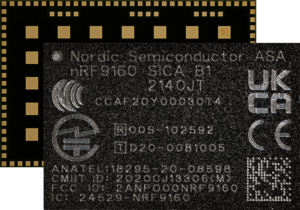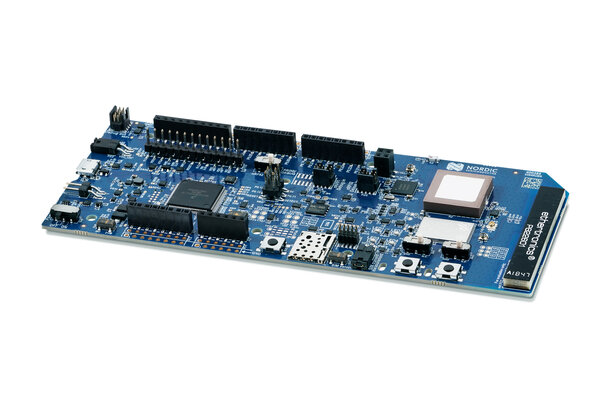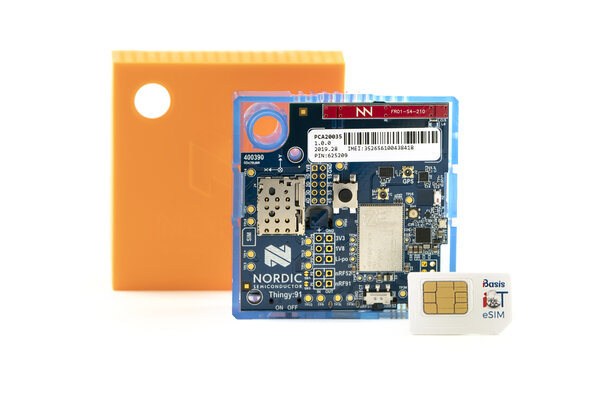Low power cellular IOT - Enabling a World of Everything
The cellular IoT technology enables many new applications, however, if you put ultra-low power into the mix the potential applications grow exponentially.
The nRF9160 is Nordic's first low-power cellular device for the Internet of Things. It has been engineered from inception to perform at the highest possible standards for energy efficiency and security whilst simultaneously bringing advanced application performance and possibilities to cellular IoT. With an unprecedented level of integration bringing LTE-M, NB-IoT, GNSS, all RF front end (RFFE), and power management into a very small package the nRF9160 make single-chip solutions a real possibility in many cases.
Introduction to Cellular IOT
LTE-M

LTE-M (also known as Cat-M1) is designed for low-power applications requiring medium throughput. It has a narrower bandwidth of 1.4MHz compared to 20MHz for regular LTE, giving a longer range, but less throughput. The throughput is 375kbps uplink and 300kbps downlink, providing approximately 100kbps application throughput running IP. It is suitable for TCP/TLS end-to-end secure connections. Mobility is fully supported, using the same cell handover features as in regular LTE. It is currently possible to roam with LTE-M, meaning it is suitable for applications that will operate across multiple regions. The latency is in the millisecond range offering real-time communication for time-critical applications.
LTE-M is perfect for medium-throughput applications requiring low power, low latency, and/or mobility, like asset tracking, wearables, medical, POS and home security applications.
NB-IoT

NB-IoT (also known as Cat-NB1) is a narrowband technology standard that does not use a traditional LTE physical layer but is designed to operate in or around LTE bands and coexist with other LTE devices. It has a bandwidth of 200kHz, giving it a longer range and lower throughput compared to LTE-M and regular LTE. The throughput is 60kbps uplink and 30kbps downlink. It is suitable for static, low-power applications requiring low throughput. With the introduction of Cat-NB2 in 3GPP release 14, you can achieve a throughput of 169kbps uplink and 127kbps downlink if the network supports it.
NB-IoT is perfect for static, low throughput applications requiring low power and long-range, like smart metering, smart agriculture and smart city applications. It also provides better penetration in, for example, cellars and parking garages compared to LTE-M.
GNSS
GNSS (Global Navigation Satellite Service) refers to a constellation of satellites sending positioning and timing data to GNSS receivers. Those receivers then use this data to determine their location. The most common GNSS system is the Global Positioning System (GPS) which uses three transmission paths. Each of the GPS satellites transmits at least two carrier signals (L1 and L2). By sending the C / A -code on two frequency bands, time delays caused by ionospheric effects can be compensated mathematically. This way, the accuracy of the positioning can be increased. Because the reception power of the GPS signals must not fall below the value of -158.5dBm (for military signals -161.5dBm), a transmission power of more than 20W per frequency band is required.
Applications

Logistics & asset tracking

Wearables & medical

Smart city & smart home

Predictive mainteance & industrial

Smart agriculture
nRF9160 SiP - Low Power SiP with Integrated LTE-M/NB-IOT Modern and GNSS

The nRF9160 is a compact, highly integrated System-in-Package (SiP) that makes the latest low power LTE technology and advanced processing and security accessible, and easy to use, for a wide range of single device low power cellular IoT (cIoT) designs.
Incorporating an Arm Cortex-M33 application processor solely for applications, a full LTE modem, RF Front End (RFFE) and power management system. The nRF9160 is the most compact, complete and energy-efficient cellular IoT solution on the market.
The integrated modem supports both LTE-M and NB-IoT and can operate globally removing any need for regional variants. All power-saving features including eDRX and PSM are supported as is with IPv4/IPv6 support up to transport and security (DTLS/TLS) level. The modem firmware is upgradable via secure, encrypted Firmware Over The Air (FOTA) updates.
The Arm Cortex-M33 application processor is supported by 1 MB of flash and 256 KB RAM making advanced application development possible in a single device solution.
A GNSS receiver is integrated into the radio offering various modes of operation to suit a wide selection of applications that employ location-tracking functionality. The nRF9160 SiP also supports different cellular-based location features for several use cases.
A broad selection of general interfaces and peripherals and are included on nRF9160 including 12-bit ADC, RTC, SPI, I²C, I²S, UARTE, PDM and PWM.
Security is best-in-class with Arm TrustZone technology for isolation and protection of normal and secure zones for firmware and elements of hardware including memory and peripherals. Arm TrustZone helps build solid and secure IoT applications that feature secure boot, trusted firmware updates and root of trust implementations without performance compromise.
Arm CryptoCell enhances security further by offering cryptographic and security resources to help protect your IoT applications from various attack threats. CryptoCell is designed for high-performance cryptography solutions optimized for energy-constrained devices.
The nRF9160 supports both SIM and eSIM for connection and authentication with mobile network operators.
The nRF9160 can easily utilize the nRF Cloud Services offerings such as FOTA, Location services, and more.
Key Features
- Fully integrated SiP for cellular IoT
- Multimode LTE-M/NB-IoT modem with GNSS
- 700-2200 MHz LTE band support
- Certified for global operation
- Dedicated application processor and memory
- 64MHz Arm Cortex-M33
- 1 MB flash + 256 KB RAM
- Arm TrustZone + Arm CryptoCell
Getting Started
Leave Us a Message



